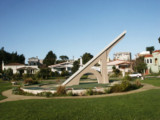 |
Sundial Accuracy Ingleside Terraces, San Francisco Sundial Bridge, Redding |
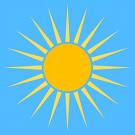 |
| How accurate is a sundial? The Ingleside Terraces Sundial is accurate within a minute or two for suntime in the middle of a sunny day, as demonstrated by the photos and text below. | ||
| The diameter of the sun as seen from the earth is about 0.5 degrees. As there are 15 degrees longitude per hour, light from the west side of the sun arrives about two minutes earlier than light from the east side of the sun. This limits sundial accuracy for suntime to about a minute or two. Clock time can be obtained from sundial time by using the equation of time (EOT), as shown below. |
Mornings:
Above is IMG_20210123_115351231, taken, as its name indicates, on 1/23/2021 at 11:53:51 PST. Suntime, as shown by the edge of the shadow in the half hour groove in the inner curb, is 11:30 A.M. The blue-green index card increases contrast making it easier to see the edge of the shadow. Right click to enlarge these photos. The NOAA EOT adjustment for this date, at latitude 37.72468, longitude -122.46876, is 21 minutes, 44 seconds, which would make clock time 11:51:44. As the following edge of the shadow is used, another minute can be added to correct to the middle of the sun. Adding this correction gives 11:52:44 PST, which is 1 minute 7 seconds before clock time on the cell phone.
One year followup: This is IMG_20220109_114908, taken on 1/09/2022 at 11:49:08 PST. Suntime is 11:30 A.M., using the half hour groove in the inner curb. The NOAA EOT adjustment for this date is 16'55", which would make clock time 11:46:55. Another minute is added to correct to the middle of the sun. Adding this correction gives 11:47:55 PST, which is 1 minute 13 seconds before clock time and is very close to the results obtained a year earlier.
Above is IMG_20230815_124538, taken on 8/15/2023 at 12:45:38 PDT. Suntime is 11:30 A.M., using the half hour groove in the outer curb. One hour is added for Daylight Savings Time, and the NOAA EOT adjustment for this date is 14'27", which would make clock time 12:44:27. Another minute is added to correct to the middle of the sun. Adding this correction gives 12:45:27 PDT, 11 seconds before clock time.
Above is IMG_20240222_12103157, taken on 2/22/2024 at 12:10:32 PST. Suntime is 11:45 A.M., using the 45 minute groove in the outer curb. The NOAA EOT adjustment for this date is 23'26", which would make clock time 12:08:26. Another minute is added to correct to the middle of the sun. Adding this correction gives 12:09:26 PST, which is 66 seconds before clock time.
Date 6/17/2025. Suntime is 10:30 A.M., using the groove in the inner and outer curbs. The photos above were taken from left to right, at 11:42:02 and 11:42:50 PDT. Right click to see larger images. The shadow moves from west to east, left to right. Before solar noon the following (left) edge of the shadow is used. The 5' reflective orange rod between the half hour grooves in the outer and inner curbs makes it easier to see the edge of the shadow.
Date 7/7/2025. Suntime is 11:30 A.M., using the groove in the inner and outer curbs. The photos above were taken from left to right, at 12:45:55 and 12:46:20 PDT. Right click to see larger images. The shadow moves from west to east, left to right. Before solar noon the following (left) edge of the shadow is used. The reflective orange rod makes it easier to see the edge of the shadow.
Afternoons:
This is IMG_20210119_134936701 taken on 1/19/2021 at 1:49:37 P.M. PST. Suntime, as shown by the edge of the shadow in the half hour groove in the inner curb, is 1:30 P.M. The NOAA EOT adjustment for this date and location is 20 minutes, 37 seconds, which would make clock time 1:50:47 P.M. As the leading edge of the shadow is used, a minute can be subtracted to correct to the middle of the sun. Subtracting this correction gives 1:49:47, which is the same as clock time on the cell phone.
Above is PXL_20221101_213748269.jpg taken on 11/1/2022 at 2:37:48 P.M. PDT. Suntime, as shown by the edge of the shadow in the 45 minute groove in the outer curb, is 2:45 P.M. The NOAA EOT adjustment for this date and location is minus 6 minutes, 35 seconds, which would make clock time 2:38:25. A minute is subtracted to correct to the middle of the sun. Subtracting this correction gives 2:37:25, which is 23 seconds before clock time on the cell phone. In either morning or afternoon, the umbra, the darkest part of the shadow, is used to read suntime.
Above is IMG_20240307_134959_cr.jpg taken on 3/7/2024 at 1:49:59 P.M. PST. Suntime, as shown by the edge of the shadow in the half hour groove in the outer curb, is 1:30 P.M. The NOAA EOT adjustment for this date and location is 20 minutes 47 seconds, which would make clock time 1:50:47 P.M. As the leading edge of the shadow is used, a minute can be subtracted to correct to the middle of the sun. Subtracting this correction gives 1:49:47, which is 12 seconds before clock time on the cell phone. which is excellent accuracy. This result is 21 seconds before the original photo in this series (two photos above) taken on 1/19/21 using the half hour mark in the inner curb, which is excellent consistency.
Date 6/2/2025. Suntime is 12:30 P.M., using the grooves in the outer and inner curbs. The photos above were taken from left to right at 13:36:46, 13:36:56, and 13:37:05 PDT; the shadow moves from west to east, left to right, and the second photo appears to be the most accurate. Right click for larger images. The 5' reflective orange rod between the half hour grooves in the inner and outer curbs makes it easier to see the edge of the shadow. After solar noon the leading (right) edge of the shadow is used.
Date 7/4/2025. Suntime is 2:30 P.M., using the grooves in the outer and inner curbs. The photos above were taken from left to right at 15:42:57 and 15:43:22 PDT. Right click for larger images. The shadow moves from west to east, left to right. After solar noon the leading (right) edge of the shadow is used. The reflective orange rod makes it easier to see the edge of the shadow.
The same techniques can be used to check the Redding Sundial Bridge accuracy
CONCLUSION: The Ingleside Terraces Sundial can be read with an accuracy of a minute or less in the middle of a sunny day.
The Ingleside Terraces sundial has two metal rods at 12:00 sun time, solar noon. The "noon gap" is between those two rods. The concrete groove, between the two metal rods in the outer curb, corresponds to the middle of the sun at solar noon. At solar noon, the shadow of the gnomon lies between the two metal rods at XII (the gnomon is slightly wider at the bottom than at the top and there may be some overlap). There is one metal rod at each of the other hours. The width of the white I's at the outer curb is approximately five minutes. The outer concrete curb has hourly, 15, 30, and 45 minute grooves; the inner concrete curb has hourly and half-hourly grooves.
tan(theta) = tan(HA) x sin(lat)
For example, at 11:00 in the morning suntime (one hour before solar noon), the hour angle HA = -15 degrees; latitude = 37.725 degrees, and theta = -9.3 degrees, so the hour line is drawn at -9.3 degrees from the vertical, starting at the base of the gnomon. At 2:00 in the afternoon suntime (two hours after solar noon), the hour angle HA is 30 degrees, latitude unchanged, and theta = 19.5 degrees, so the hour line is drawn 19.5 degrees from the vertical, starting at the base of the gnomon. There are claims on the web that the Vrihat Samrat Yantra sundial can be read with two second accuracy, which has not been documented.
click here for 2025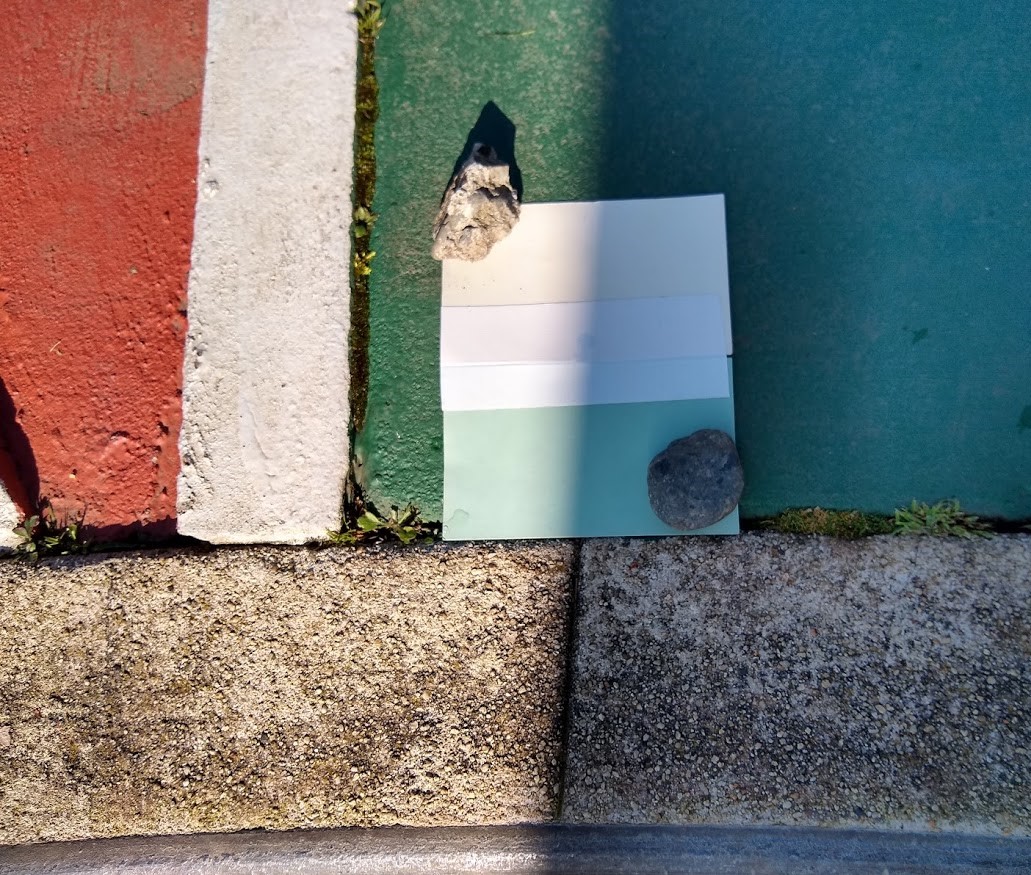
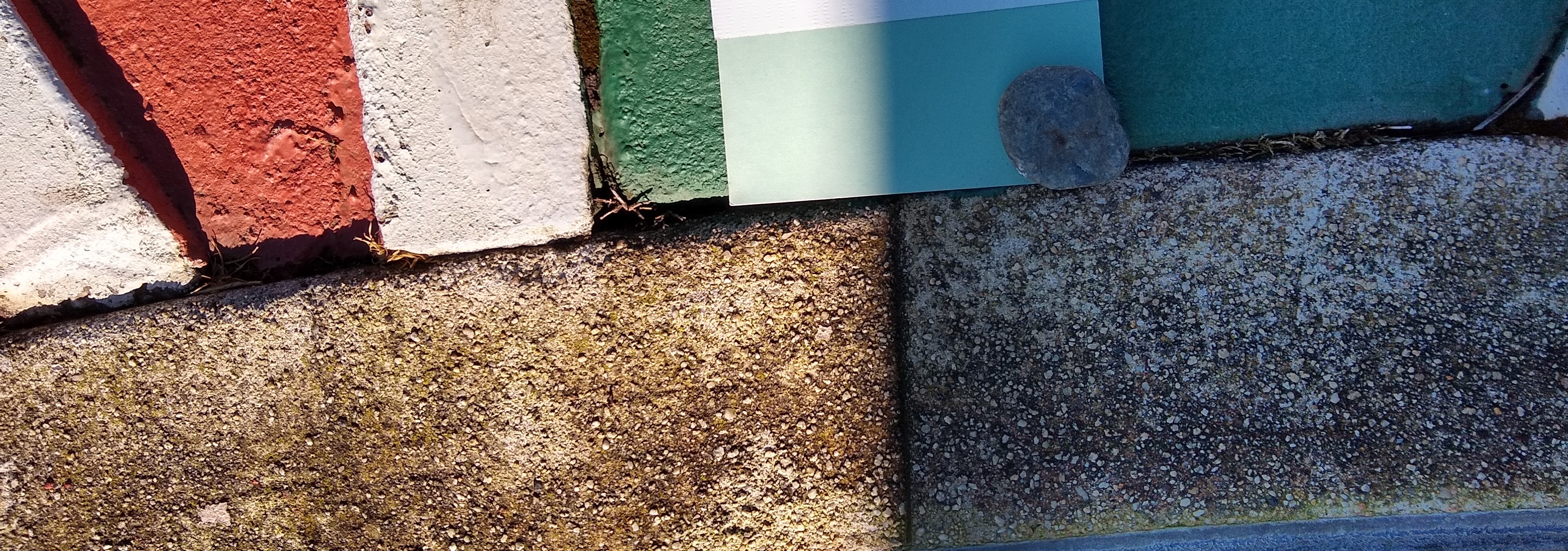
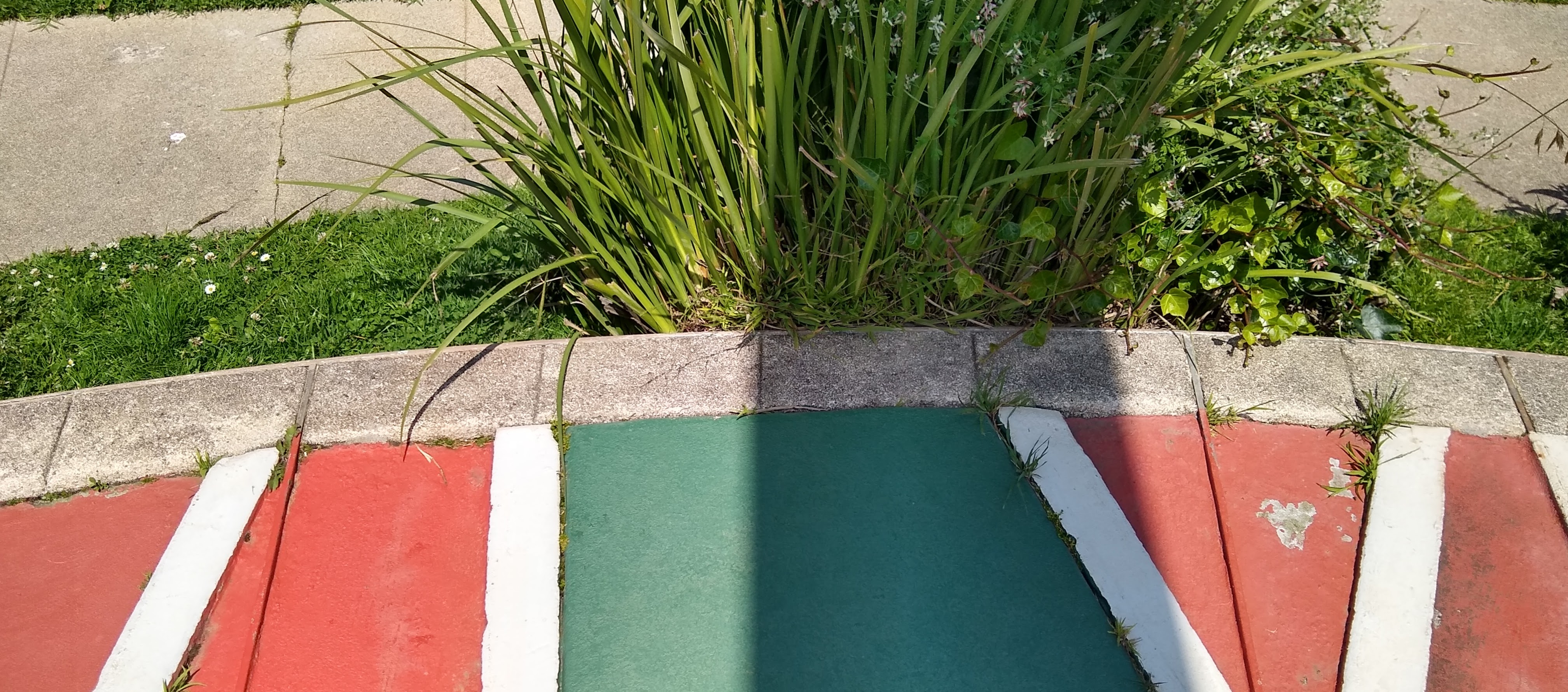
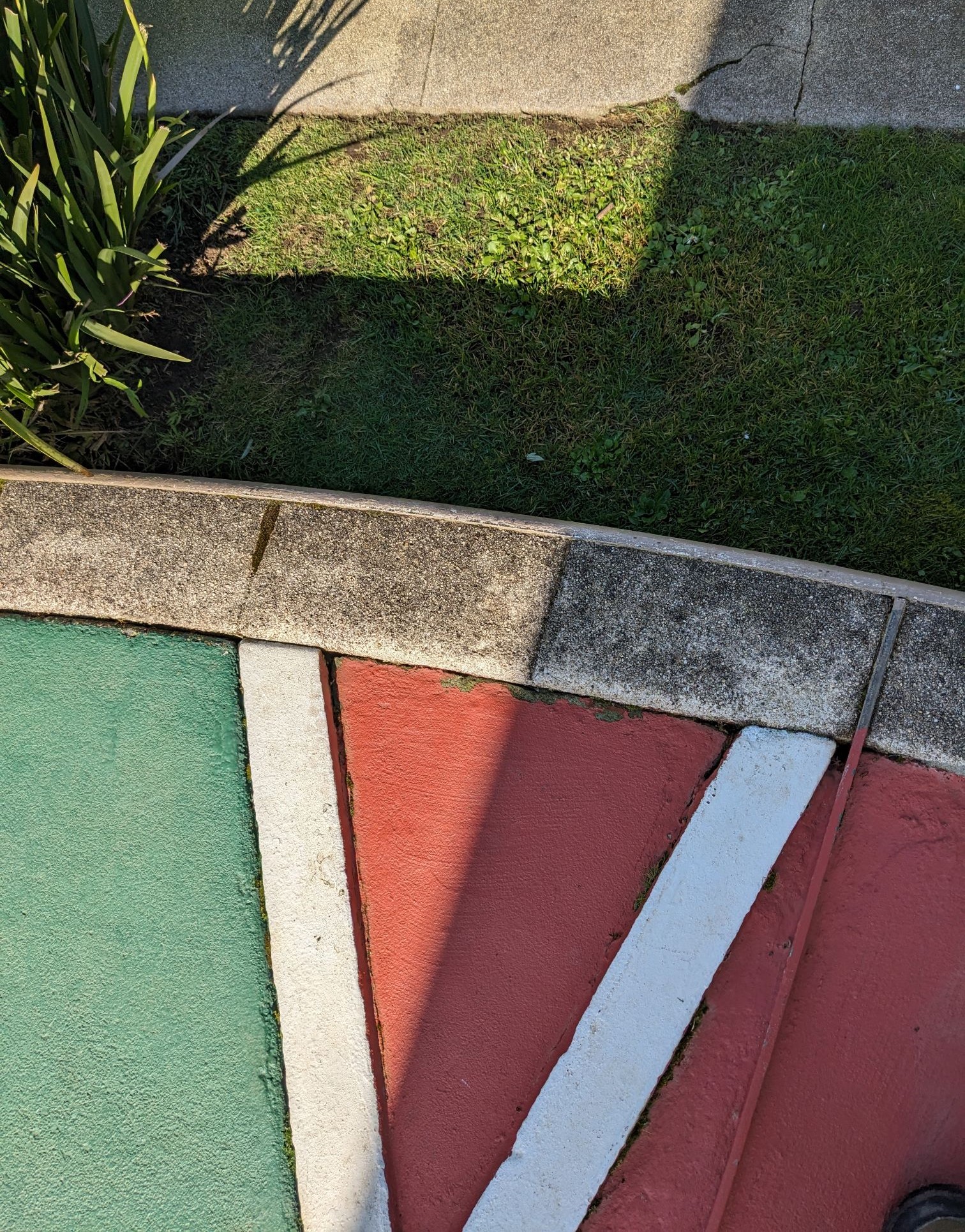
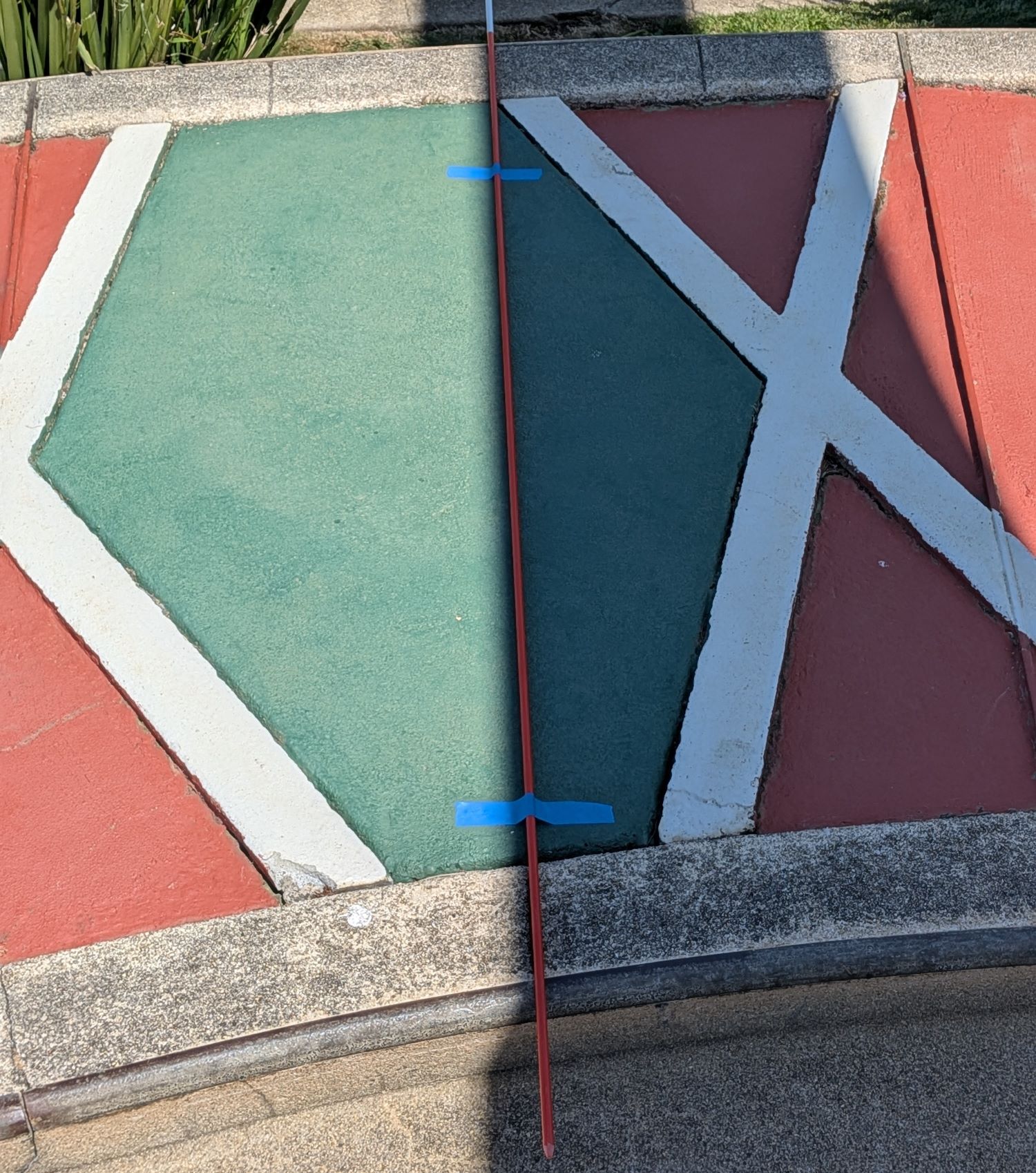
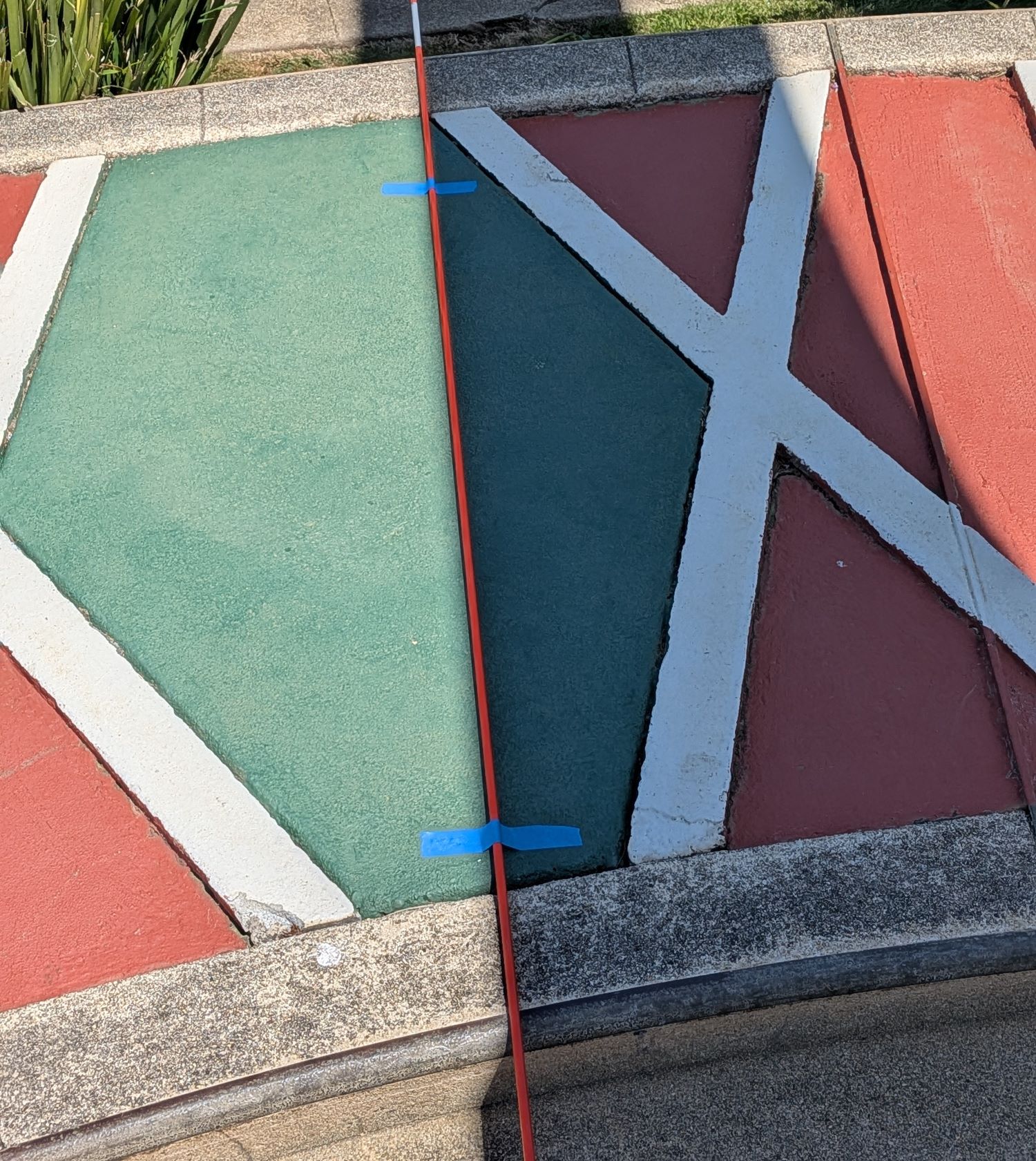
The NOAA Solar Noon Table (scroll down that page) for 2025 adjustment for this date is 1:10:51, which would make clock time 11:40:51. Another minute is added to correct to the middle of the sun. Adding this correction gives 11:41:51 PDT clock time.
The first photo, time 11:42:02, 11 seconds after clock time, is the closest to clock time.
The second photo, time 11:42:50, 59 seconds after clock time, is the most precise for sundial time.
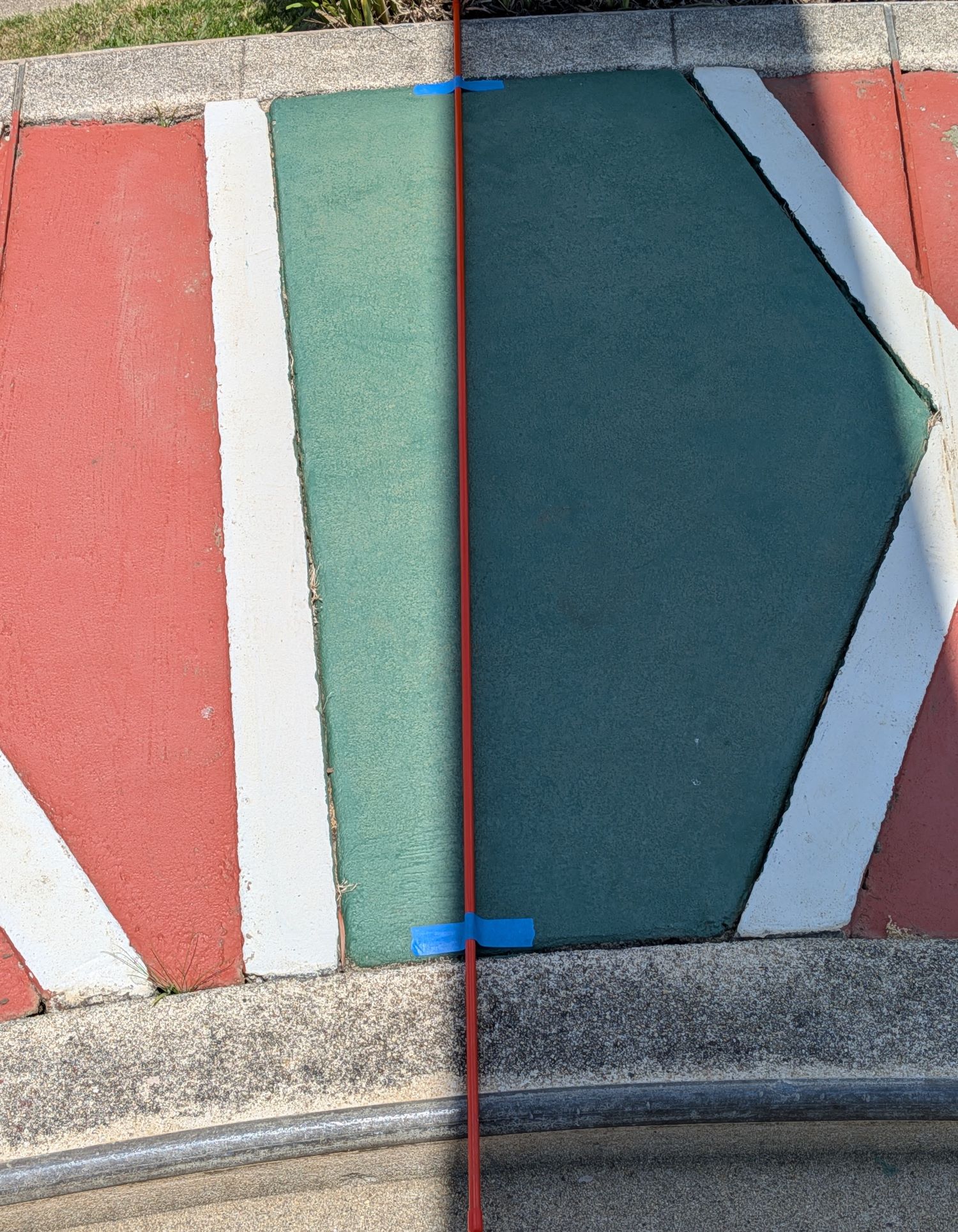
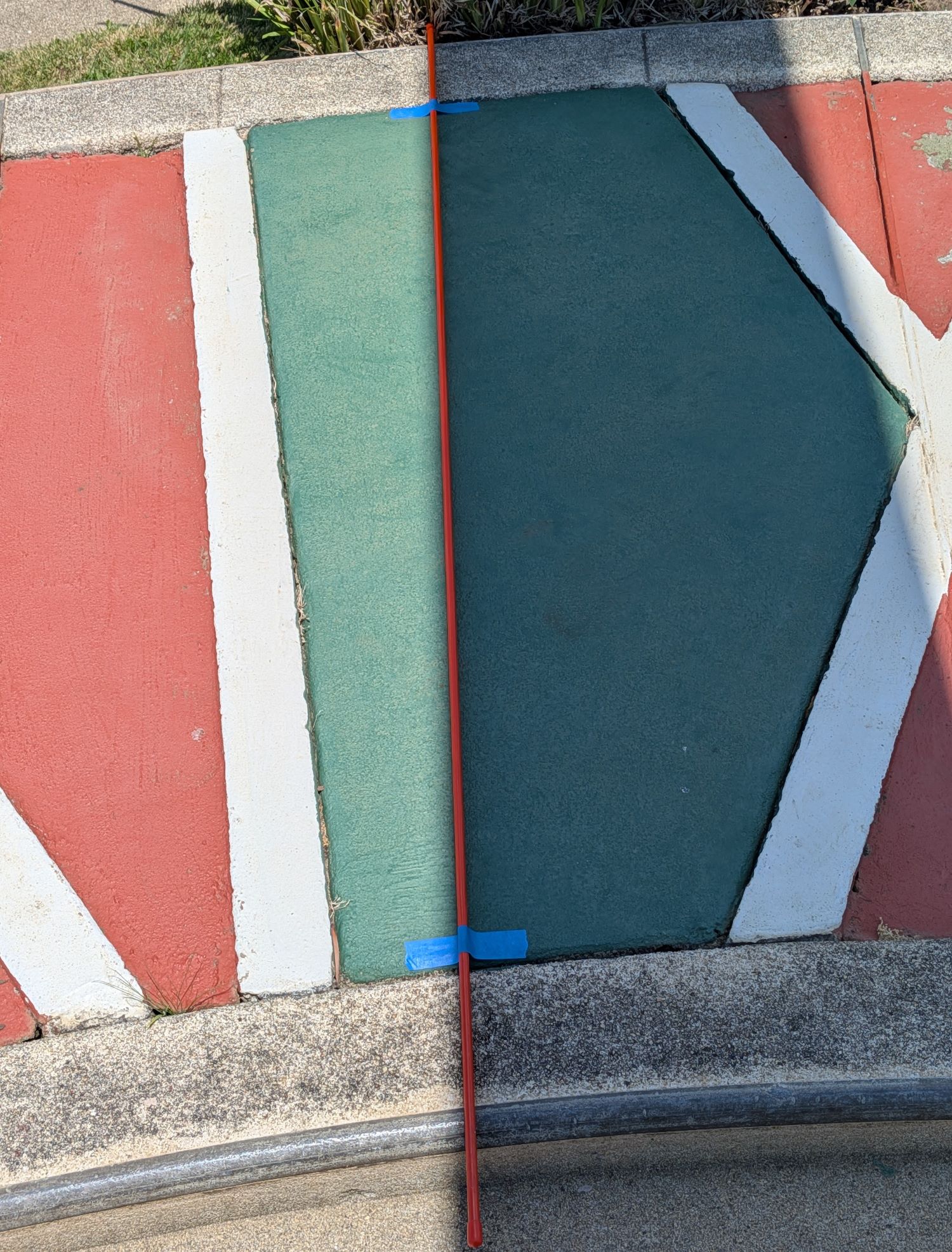
The NOAA Solar Noon Table (scroll down that page) for 2025 adjustment for this date is 1:14:51, which would make clock time 12:44:51. Another minute is added to correct to the middle of the sun. Adding this correction gives 12:45:51 PDT clock time.
The first photo, time 12:45:55, 4 seconds after clock time, is the closest to clock time.
The second photo, time 12:46:20, 29 seconds after clock time, appears to be the most precise for sundial time.
click here for 2025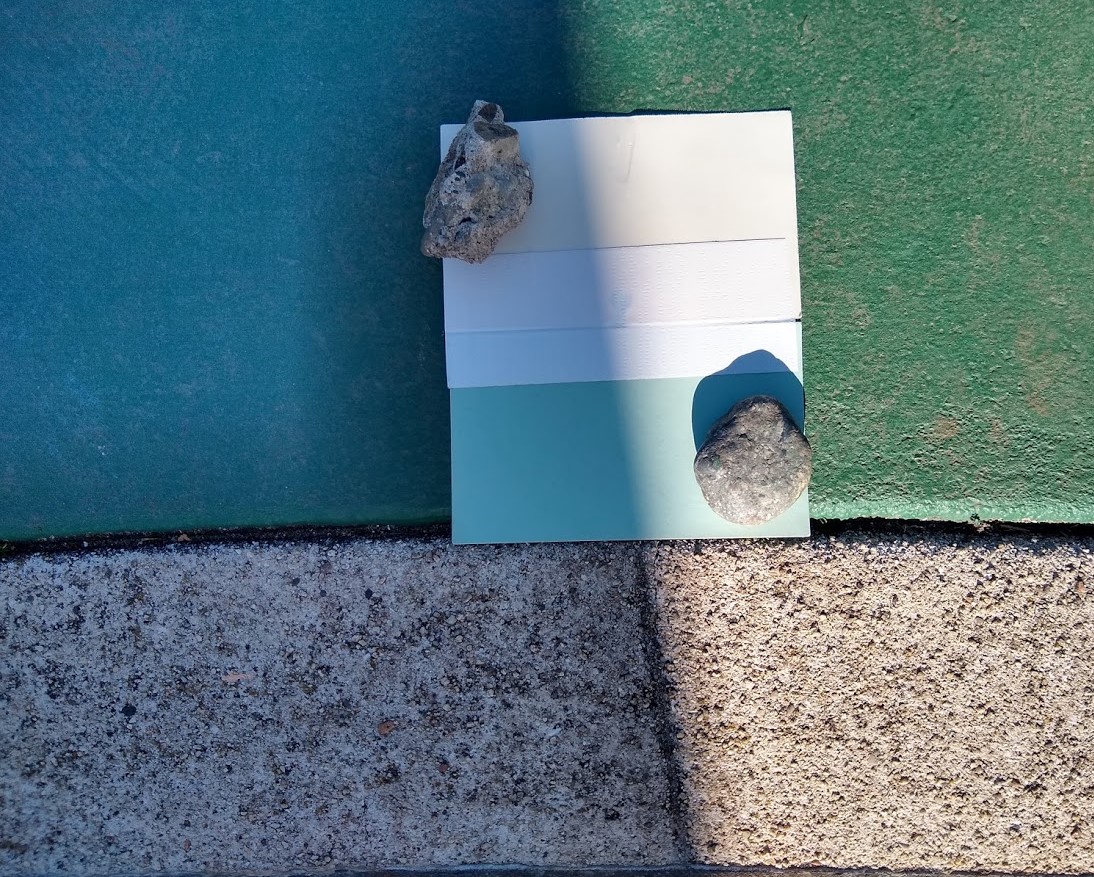
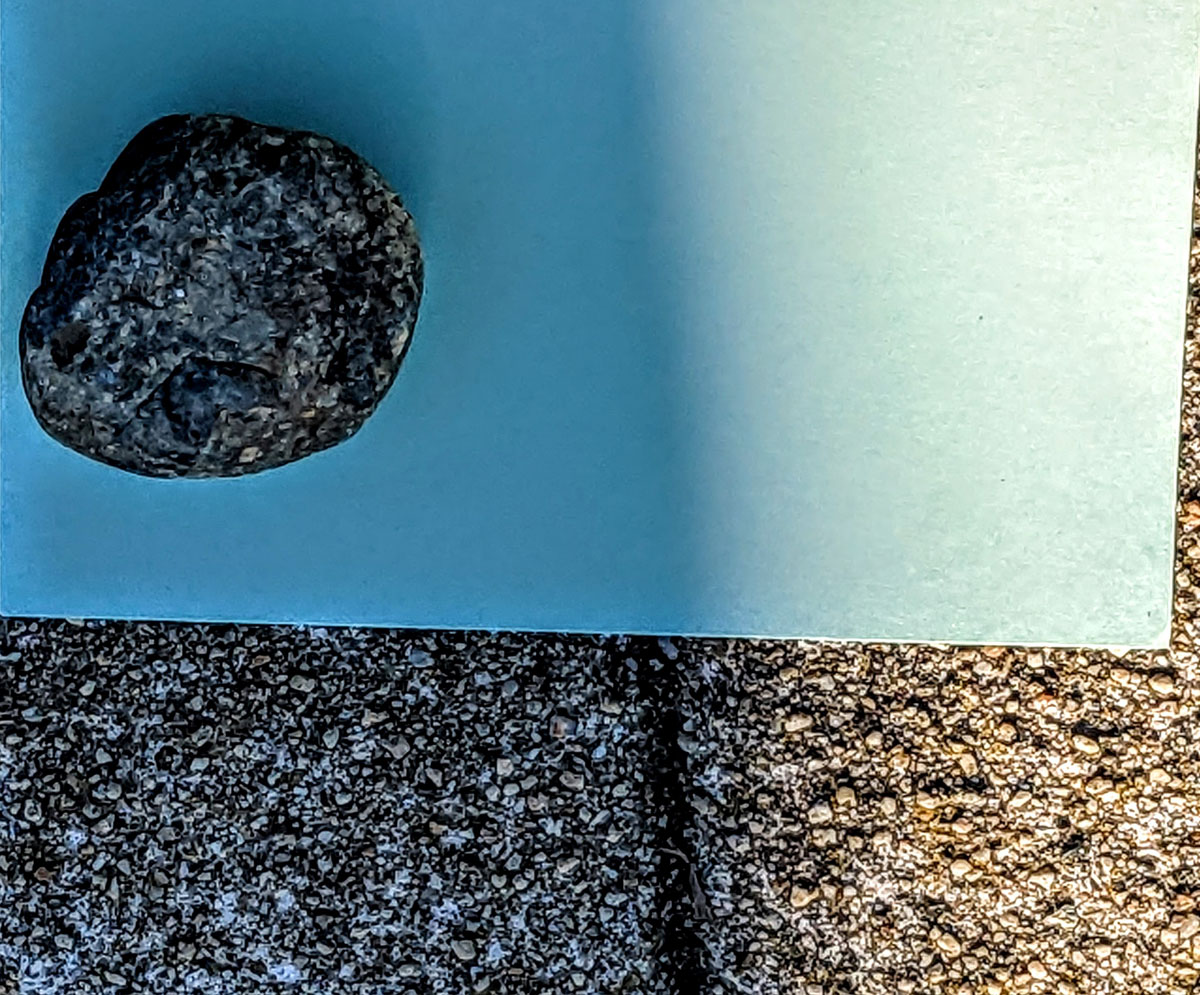
3/30/2023, 2:13 P.M. Suntime 1 P.M., plus 1 hour adjustment for daylight savings time, plus 14 minutes equation of time adjustment, minus one minute to correct to the middle of the sun = 2:13 P.M. PDT. (Photos were not taken at this reading.) Sundial time agreed with watch time to the nearest minute.
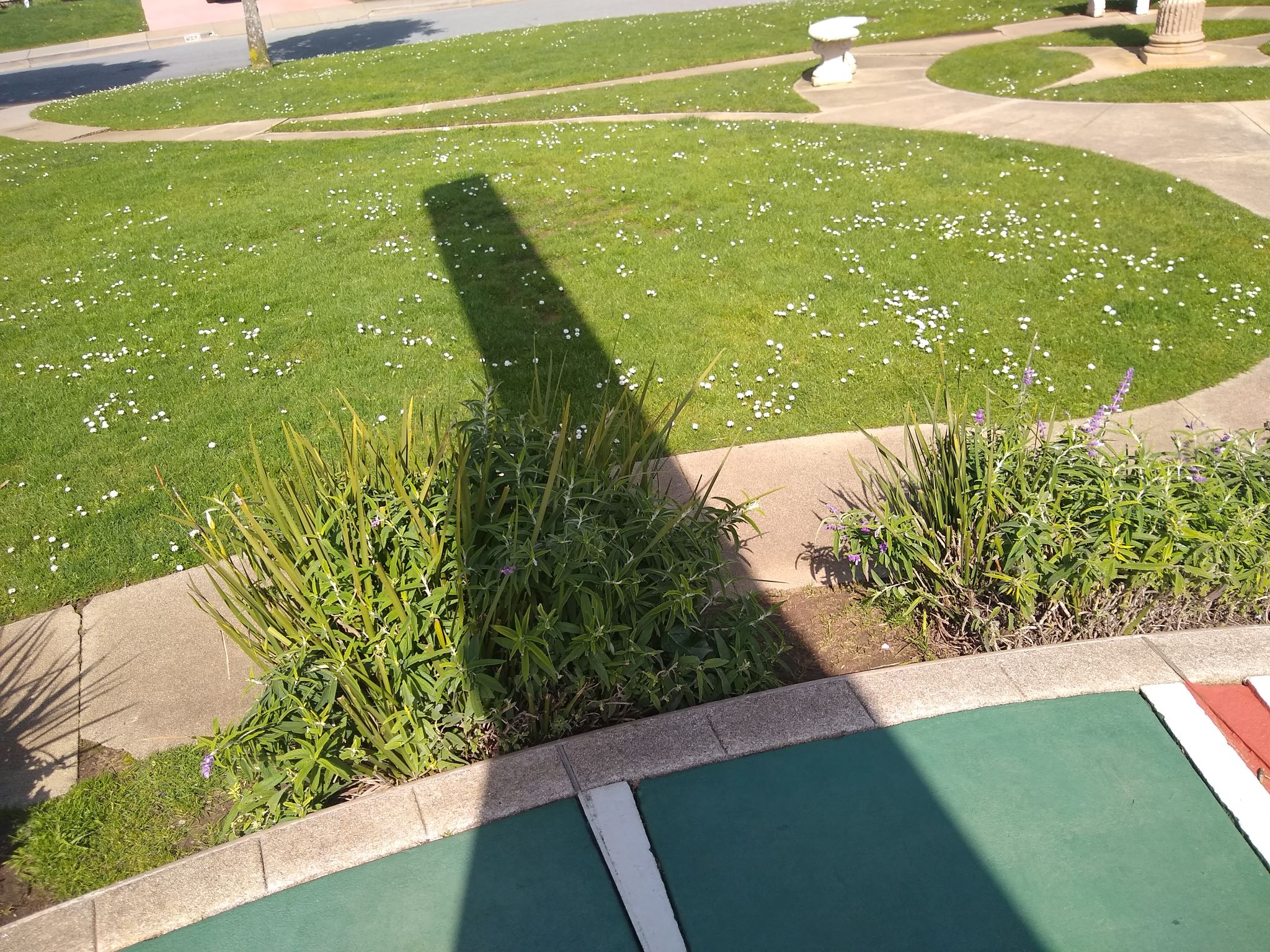
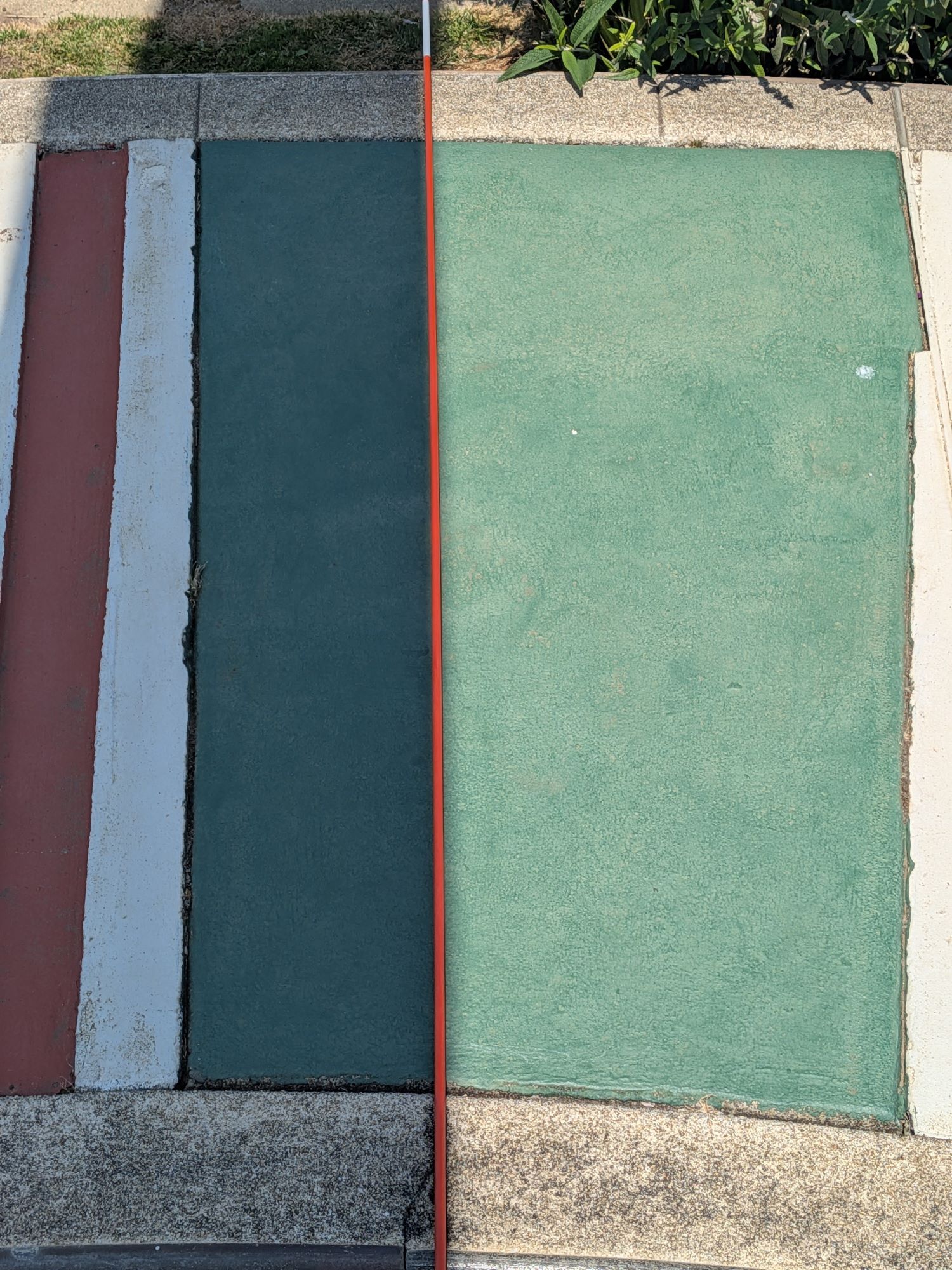
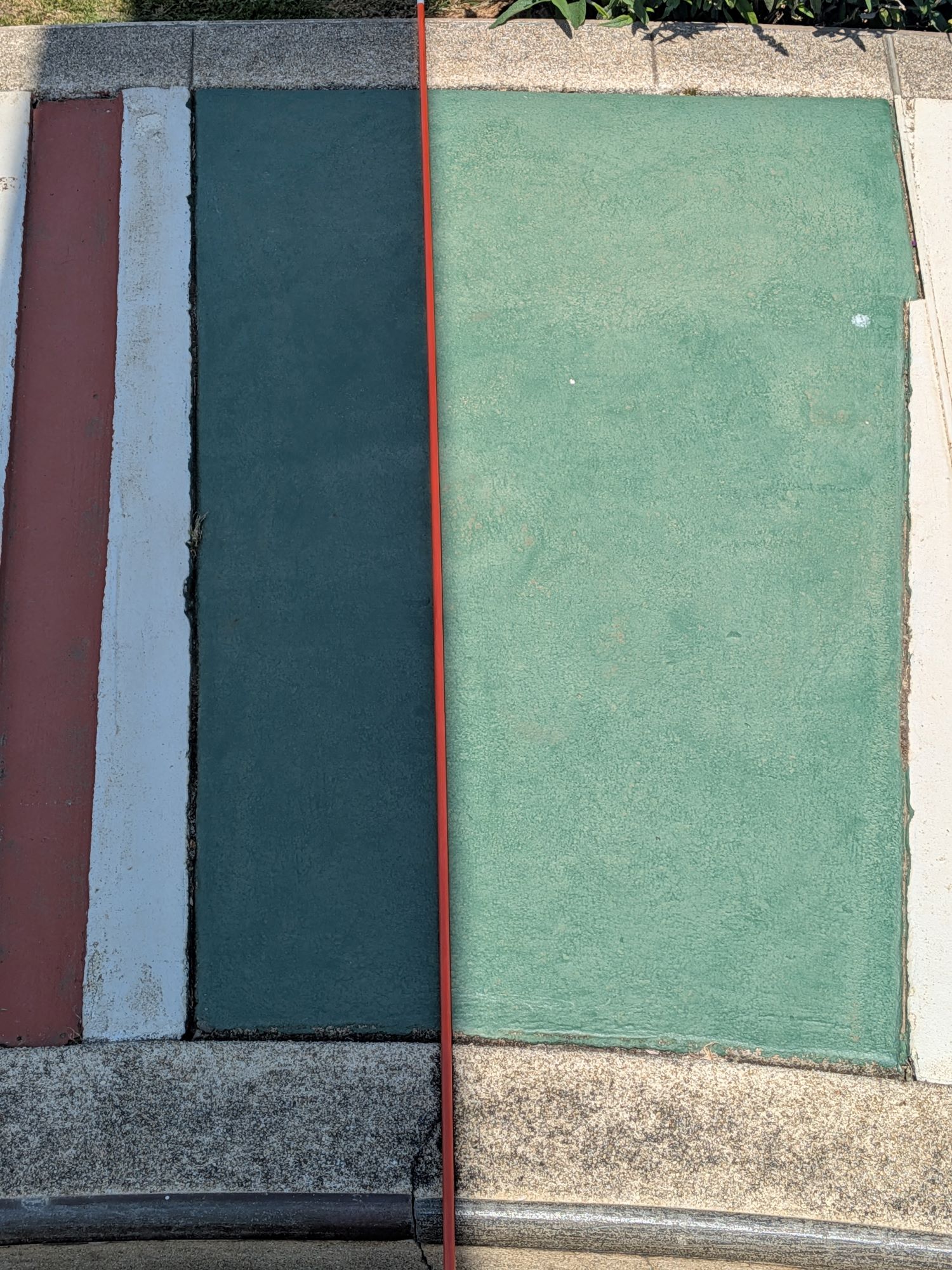
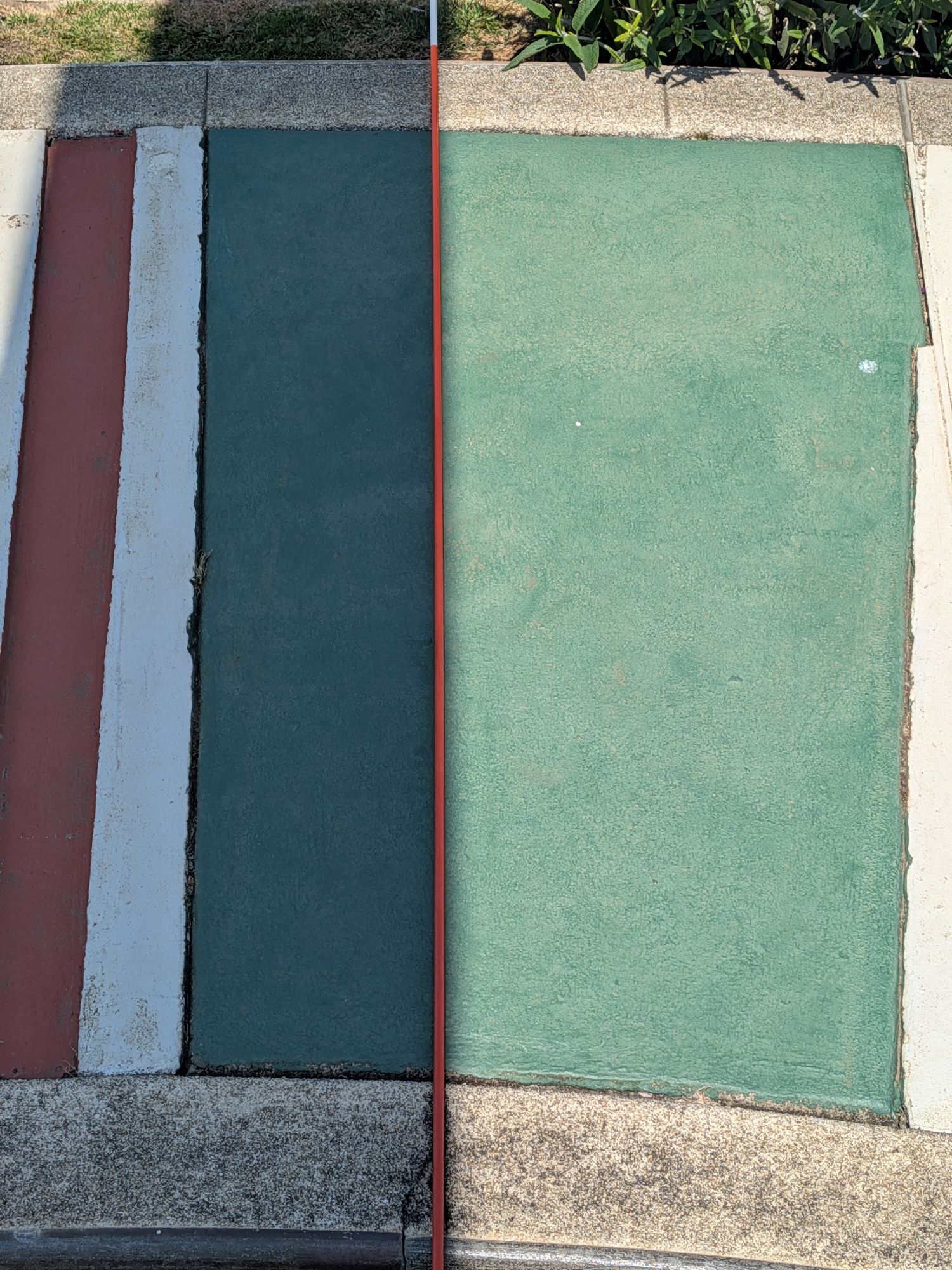
The NOAA Solar Noon Table (scroll down to the third table on that page) for 2025 adjustment for this date is 1:07:55, which would make clock time 13:37:55. A minute is subtracted to correct to the middle of the sun. Subtracting this correction gives 13:36:55 PDT, which is 1 second before clock time in the second photo and excellent accuracy.
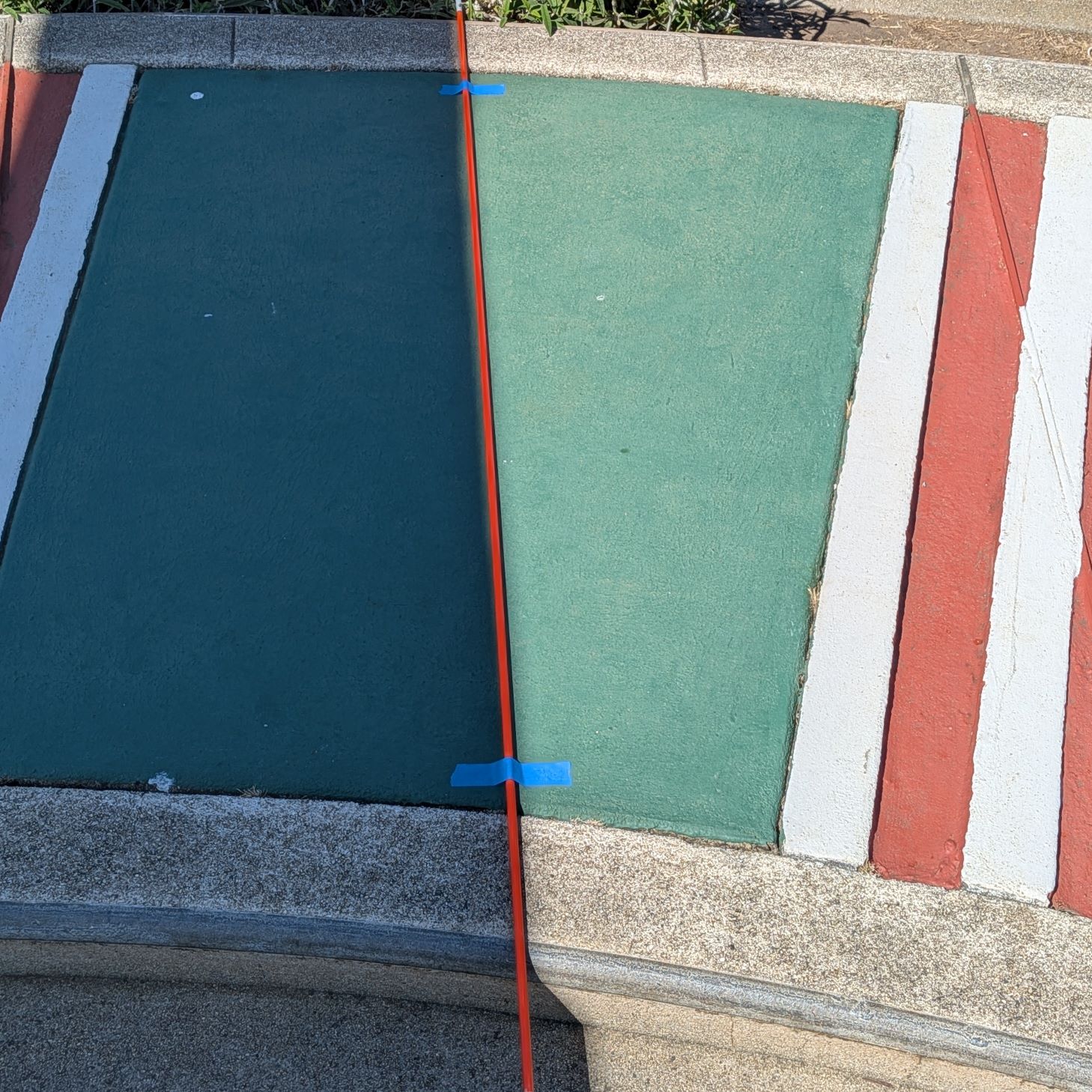

The NOAA Solar Noon Table (scroll down to the third table on that page) for 2025 adjustment for this date is 1:14:21, which would make clock time 15:44:21. A minute is subtracted to correct to the middle of the sun. Subtracting this correction gives 15:43:21 PDT, which is one second before clock time in the second photo and excellent accuracy.
The afternoon readings are more accurate than the morning readings.
Clock time can be obtained from sundial time by using the equation of time.
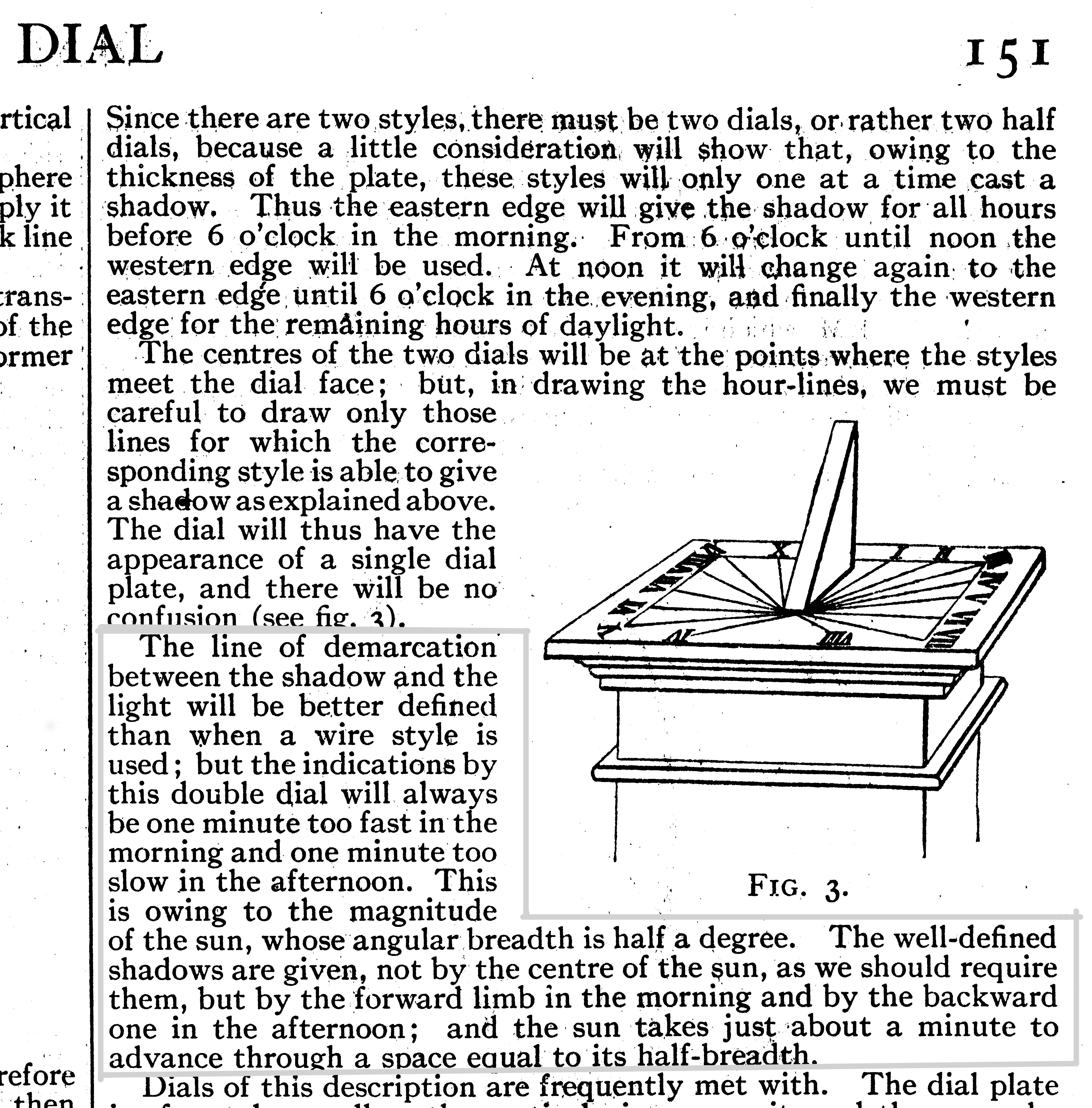
This seven page article on DIAL and DIALLING from the Encyclopædia Britannica 1911 edition
(two years before the Ingleside Terraces sundial was built) explains the need for one minute corrections
to the equation of time when using a horizontal sundial.
The above examples of reading the IT sundial show the accuracy of these one minute corrections.
The article mentions that the western edge of the shadow is read in the morning and the eastern edge of the shadow in the afternoon. (It could also be said that the southern edge of the shadow is read in the morning and in the afternoon.) The Ingleside Terraces sundial cannot be read before 6 A.M. PST or after 6 P.M. PST, as the dial lies in area that is lower than the surrounding land, houses, and trees, which block the rays of the sun at those times.
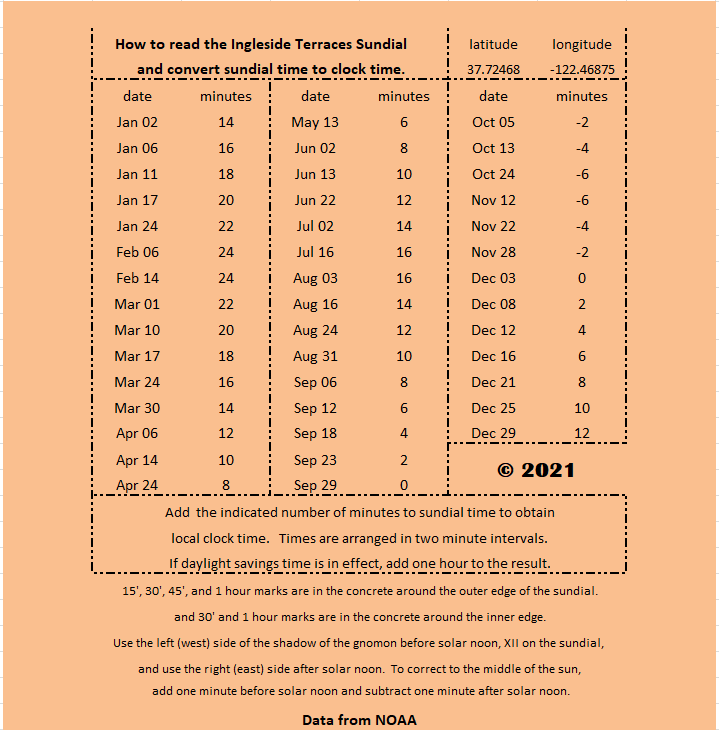
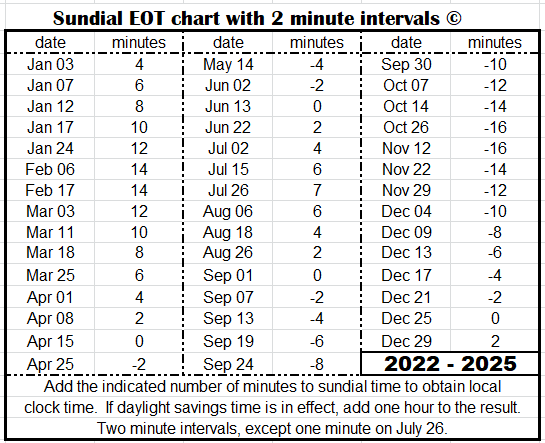
This chart is correct to the nearest minute. The equation of time repeats fairly closely every four years. For further accuracy when reading a horizontal sundial, correct to the center of the sun by adding one minute before solar noon or subtracting one minute after solar noon. The 1911 Encyclopedia Britannica article above explains the need for these one minute corrections.
This chart is for the Greenwich Prime Meridian and every 15 degrees longitude before and after that. Add longitude correction for your location or generate data from:
NOAA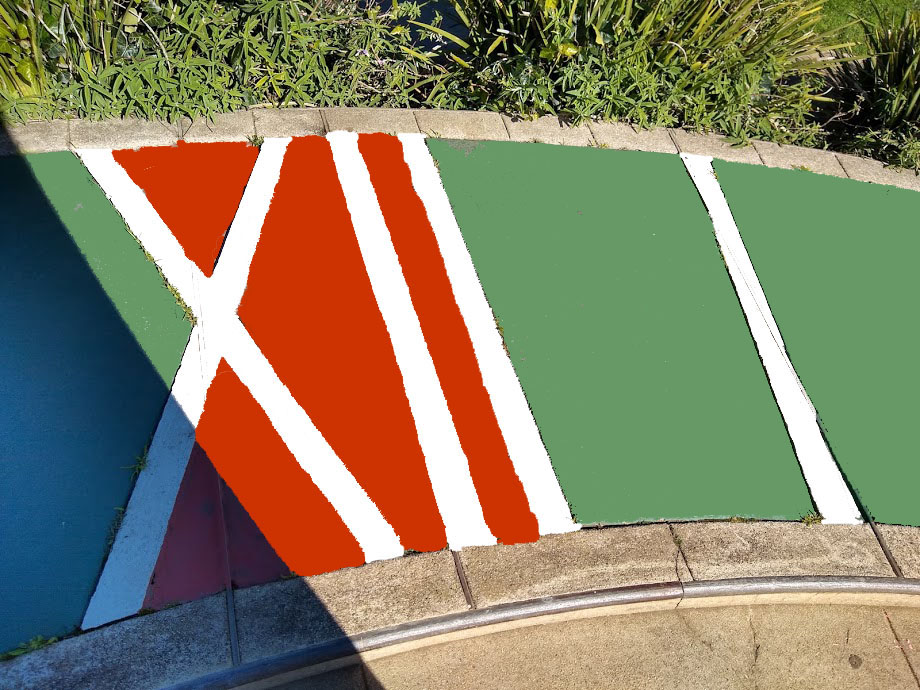
Suntime cannot be read from the above photo, as before solar noon, the left side of the shadow of the gnomon is read; after solar noon, the right side of the shadow of the gnomon is used. The colors have been retouched in this photo.
The hour lines (theta) on a horizontal sundial can be calculated using the following formula:
At the equator, 0 degrees latitude, sin(0)=0 and the
gnomon is horizontal. The hour lines are horizontal, parallel to the gnomon.
There is no permanent sundial at the north pole, 90 degrees latitude, because the ice floes there are continually moving.
At the south pole -90 degrees latitude, there has been a semipermanent
sundial. Sin(90) or sin(-90) =1, so the hour lines equal the hour angle in a 360 degree circle around the vertical gnomon.
Accuracy and Precision: A set of data points can be said to be accurate if their average is close to the true value of the quantity being measured, while the set can be said to be precise if the values are close to each other Wikipedia.
Neither has been demonstrated in photographs of the Vrihat sundial.

Robert Karis
www.sfog.usIngleside Terraces Sundial links:
Google map, directions to the Sundial
Ingleside Terraces Sundial, Then and Now Photos
Ingleside Terraces Giant Sundial
Kite Aerial Photographs
Sundial HistoryAlphabetical index
Extreme sundials
Geographic north
Ingleside Terraces Sundial
Point of Infinity sculpture
Standard clock time sundial
Sundial Bridge accuracy
Sundial factoids
Sundial plaques
Sundials EOT tables
Winter solstice
IT Sundial charts
The North American Sundial Society has a registry of over one thousand sundials in North America, including the Ingleside Terraces Sundial, which is number 82. --------------------------------------------------